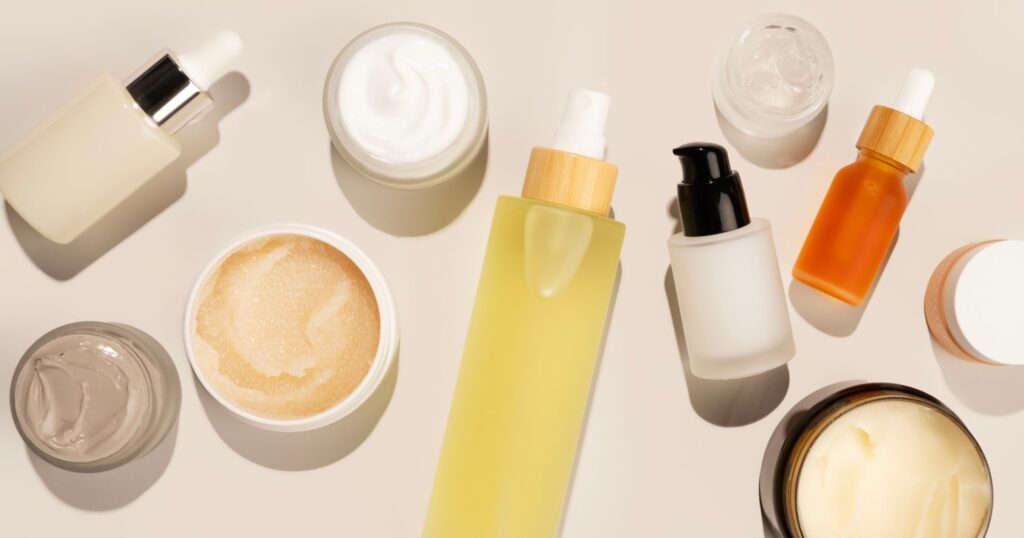Skincare products are an investment in your skin’s health and appearance—but their effectiveness heavily depends on how you store them. Exposure to heat, light, air, and bacteria can cause active ingredients like vitamin C, retinol, and peptides to degrade faster, reducing the product’s potency and potentially irritating your skin.
In this guide, you’ll learn how to properly store your skincare products to maximize their shelf life and maintain their effectiveness.
Why Proper Storage Matters
Skincare formulas are designed with delicate active ingredients that can lose their effectiveness over time if exposed to the wrong conditions. Improper storage doesn’t just make products less effective—it can also cause bacterial contamination, changes in texture, or even skin reactions.
Best Practices for Storing Skincare Products
1. Keep Products Away from Direct Sunlight
Light—especially UV rays—can break down active ingredients like vitamin C, retinol, and niacinamide, making them unstable and ineffective.
What to do:
Store products in a dark, cool cabinet or drawer. Avoid placing them on windowsills or near any direct sunlight source. If a product comes in clear packaging, be extra cautious.
2. Avoid Heat and Humidity
Heat and moisture, commonly found in bathrooms, can degrade product formulations and promote bacterial growth—especially in open jars and dropper bottles.
What to do:
Store your products in a cool, dry place. If your bathroom gets steamy, consider keeping your skincare in a bedroom drawer or even a mini skincare fridge.
3. Seal Containers Tightly
Air exposure oxidizes ingredients and shortens product lifespan. This is particularly true for serums, oils, and creams in jars or dropper bottles.
What to do:
Always close caps tightly after each use. Don’t leave lids off while applying products. If possible, choose products with airless pumps to reduce exposure.
4. Use Clean Hands or Tools
Contaminating your products with dirty fingers or tools can introduce bacteria, which not only spoils the product but can also cause breakouts and infections.
What to do:
Wash your hands before applying skincare. Use spatulas or clean applicators for jars to avoid direct contact.
5. Check Expiration Dates and PAO Symbols
Every skincare product comes with either an expiration date or a PAO (Period After Opening) symbol—an open jar icon with a number (like 6M or 12M), which tells you how long the product is safe to use after opening.
What to do:
Label your products with the date you open them. Discard any that are past their shelf life or show changes in texture, color, or smell.
6. Don’t Store Products in the Refrigerator Unless Specified
While a skincare fridge may sound trendy, not all products benefit from being chilled. Some may even become unstable or separate.
What to do:
Only refrigerate products labeled as safe for cold storage—like gel moisturizers, sheet masks, eye creams, or certain serums. Avoid chilling oils and emulsions unless instructed.
Table: Ideal Storage Locations by Product Type
| Product Type | Ideal Storage Location | Notes |
|---|---|---|
| Vitamin C Serum | Cool, dark drawer or fridge | Avoid light and heat |
| Retinol Products | Bedroom cabinet | Keep away from humidity |
| Moisturizers | Bathroom drawer (if dry environment) | Ensure lid is always sealed |
| Face Oils | Room temperature, dark space | Avoid refrigeration |
| Clay Masks | Cool, dry area | Avoid moisture to prevent hardening |
| Sheet Masks | Refrigerator | Optional, for cooling effect |
Special Tip: Skincare Before Makeup
Storing your skincare correctly is especially important when prepping your skin before applying makeup. For instance, following a well-maintained skincare routine helps your makeup glide on better and last longer.
If you’re following something like a Step-by-Step Makeup Tutorial for Hooded Eyes, applying makeup over well-stored, active skincare (like a hydrating serum and moisturizer) will enhance the final look and prevent creasing or dryness—especially around the delicate eye area.
FAQs: Skincare Storage
Can I keep my skincare products in the bathroom?
It depends on your bathroom environment. If it’s consistently hot and humid, it’s better to store skincare in a cool, dry room to prevent degradation and contamination.
Is it okay to store skincare in the fridge?
Some products benefit from refrigeration (like eye creams, aloe gels, and sheet masks), but others—especially oil-based or emulsion products—can become unstable. Always follow manufacturer instructions.
How can I tell if a product has gone bad?
Look for changes in color, texture, smell, or separation. If a product smells rancid, has become watery or chunky, or stings unexpectedly, it’s time to discard it.
What’s the best way to track product expiration?
Use a marker or label to write the date you opened the product. Then follow the PAO (Period After Opening) guideline on the packaging, usually marked in months (e.g., 6M, 12M).
Should I throw away products past their expiration?
Yes. Expired skincare can be ineffective or even harmful. It’s best to stick with products within their recommended usage period.
Final Thoughts
Taking care of your skin isn’t just about what products you use—it’s also about how you store them. Heat, light, and contamination can weaken even the most potent formulas, wasting your money and possibly irritating your skin. By following simple storage guidelines, you’ll protect the integrity of your products and get the results you’re paying for.
Whether you’re getting ready for a night out or following a Step-by-Step Makeup Tutorial for Hooded Eyes, well-maintained skincare is the foundation of any great beauty routine. Treat your products right, and they’ll return the favor with better performance and longer-lasting effects.







